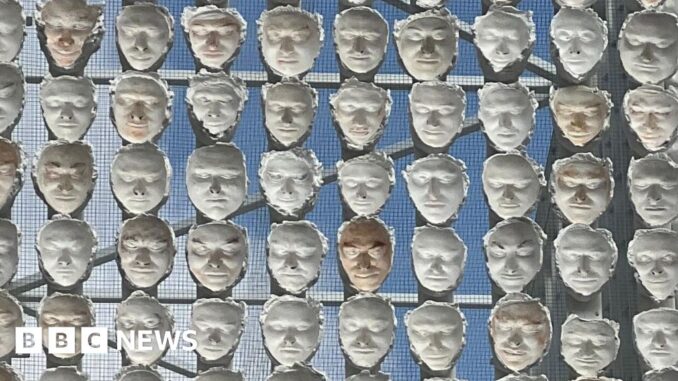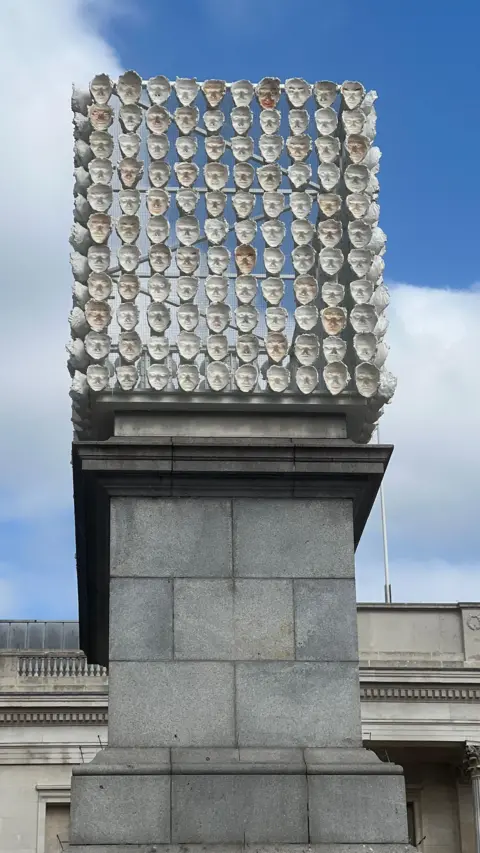
 BBC
BBCHundreds of plaster casts of transgender and non-binary people have been unveiled as the latest installation on the Trafalgar Square Fourth Plinth in central London.
Called Mil Veces un Instante (A Thousand Times in an Instant) the sculpture was created by Mexican artist Teresa Margolles and features the faces of 726 trans, non-binary and gender non-conforming people.
The plinth was built in 1841 to display a permanent statue of William IV, but money ran out.
It was empty until 1999 when it became the location for an ongoing series of temporary artworks, including pieces by David Shrigley, Rachel Whiteread and Antony Gormley.
Mil Veces un Instante was made by applying plaster directly onto the faces of the models, many of whom were sex workers, so the material became infused with the sitters’ hair and skin cells.
The casts are arranged around the plinth in the form of a tzompantli, a skull rack that featured in Mesoamerican civilisations, used to display the remains of war captives or sacrificial victims.
Margolles has said the work recognises a community that is often marginalised, in both her native Mexico and around the world.
The three other plinths that surround Nelson’s Column feature George IV and two 19th Century military figures instrumental in Britain’s control of India, Charles James Napier and Henry Havelock.

Margolles’s work “investigates the social and aesthetic dimensions of conflict, creating sculptural installations, photographs, films and performances imbued with material traces of death”.
She trained as a forensic pathologist and worked as a mortician in Mexico City.
Her previous artwork was influenced by the nameless victims of drug-trafficking violence, whose unidentifiable bodies passed through the morgue.



Be the first to comment